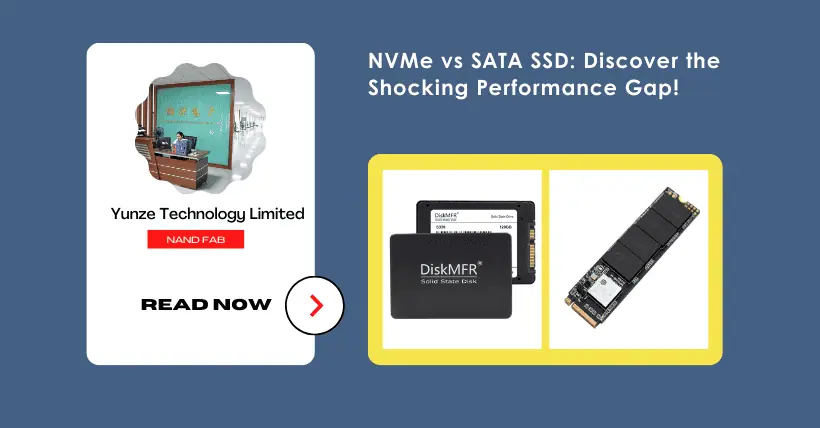NVMe SSDs are currently gaining significant attention in the storage world, and for good reason. In terms of performance, NVMe SSDs not only easily outperform older SSDs but also leave traditional 3.5-inch and 2.5-inch hard drives far behind.
Take Samsung’s 1TB 860 Pro as an example; it’s a 2.5-inch SSD with a maximum sequential read speed of 560MB/s. Its successor, the NVMe 990 Pro, skyrockets to 7400MB/s, over 13 times faster!
Why is NVMe so impressive? It stems from the close relationship between SSDs and motherboards. Before NVMe, hard drives were connected via the SATA III interface, which, despite being effective, began to show its limitations as hard drive technology advanced.
The advent of NVMe changed the game. Simply put, while both SATA III and NVMe connect drives to computers, NVMe is like a high-speed train, whereas SATA III is merely a regular commuter.
Going back to the year 2000, the introduction of the SATA interface replaced the older parallel ATA standard, significantly boosting connection speeds. By 2008, SATA III emerged, achieving a maximum transfer rate of 600MB/s, which felt rapid at the time. However, the speed of SSD development quickly outpaced SATA III and its partner AHCI, leading to a bandwidth bottleneck.
Thus, the industry began exploring new solutions, and luckily, PCIe interfaces were already established in PCs. Most people are familiar with PCIe, as graphics cards and sound cards use these slots.
On motherboards, PCIe slots typically come in x16, x8, x4, and x1 configurations, with larger numbers meaning more “lanes” for faster data transfer. M.2 slots usually support x4, allowing four data transfer channels.
Currently, when we refer to NVMe drives, we are generally talking about M.2 drives based on the PCIe interface. NVMe isn’t just a simple upgrade; it’s designed for PCIe, capable of handling numerous data commands simultaneously with low latency and high speed.
If you have a motherboard that supports NVMe, installing an M.2 NVMe drive will significantly boost your computer’s performance!
However, don’t rush to discard SATA III drives. While their bandwidth is limited, they remain a solid secondary storage option. When building a new PC, you can use an M.2 NVMe drive for primary storage and pair it with a large SATA III drive or a 2.5-inch SSD for storing larger files, offering both savings and practicality.
Regarding capacity, current NVMe drives typically hover around 2TB, with 4TB and 8TB models on the way but at a premium. In contrast, a 1TB M.2 NVMe drive priced around 400 RMB offers good value.
Thus, the best strategy now is to combine M.2 drives with traditional drives for a balanced approach to performance and capacity. If you’re considering a new laptop, opt for one with NVMe flash memory, and check for a 2.5-inch hard drive bay for easy expansion with a large secondary drive.
Lastly, a word of advice: while NVMe drives are generally fast, not all are equally quick. Before purchasing, it’s wise to check reviews and compare options to ensure a satisfying upgrade experience!

Disclaimer:
- This channel does not make any representations or warranties regarding the availability, accuracy, timeliness, effectiveness, or completeness of any information posted. It hereby disclaims any liability or consequences arising from the use of the information.
- This channel is non-commercial and non-profit. The re-posted content does not signify endorsement of its views or responsibility for its authenticity. It does not intend to constitute any other guidance. This channel is not liable for any inaccuracies or errors in the re-posted or published information, directly or indirectly.
- Some data, materials, text, images, etc., used in this channel are sourced from the internet, and all reposts are duly credited to their sources. If you discover any work that infringes on your intellectual property rights or personal legal interests, please contact us, and we will promptly modify or remove it.



